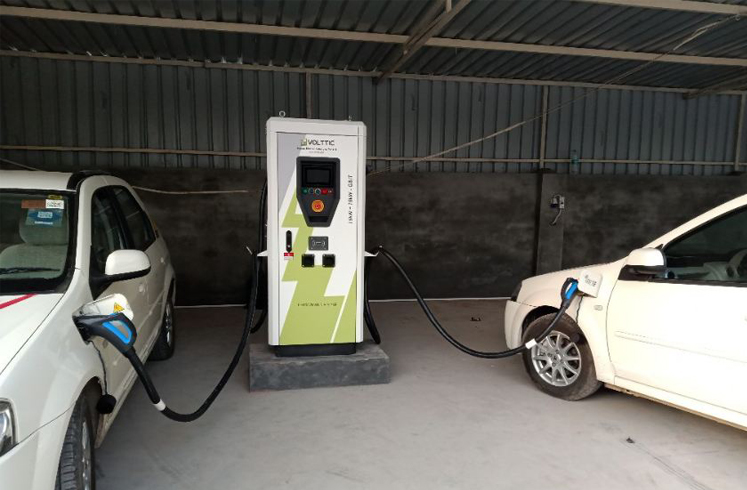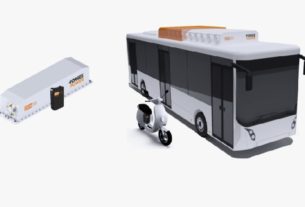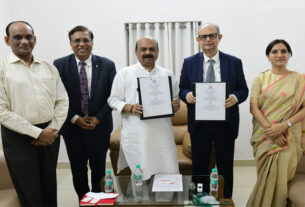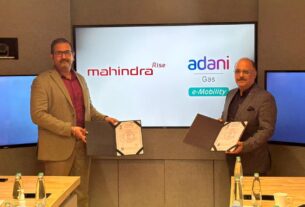Sustainable and reliable electric vehicle (EV) charging infrastructure is the key driver for mass EV adoption. In this space, Volttic is a leading electric vehicle charging station provider in India whose mission is to be a leader in the EV charging industry by providing technology-oriented solutions. In this interview with N. Balasubramanian, Varun Chaturvedi, Managing Director and CEO, Volttic shares about the company’s plans to make electric charging a customer-friendly service as well as its long-term business model

Could you share an overall brief about your company? What was the main motive behind starting Volttic and how has your journey been until now?
Volttic is an end-to-end electric vehicle (EV)charging solution provider where we provide EV chargers integrated with cloud-based backend monitoring system on OCPP 1.6 and also services for installation and maintenance. You can say that we are a one-stop solution for all your home and commercial charging needs.As a business model we operate in three ways; EV charger sales (home chargers), commercial charging andsoftware subscription CMS services.More dominant is commercial charging where we have captive and public charging stations available as solutions. The main motive to start Voltticwas to have a balanced business approach where we can contribute to our social responsibility at a time when the risk of climate change is increasing day by day.
At the same time, we want to club this objective with a business approach where we can generate employment and revenue as well.As an individual I always believe in doing something in which I have expertise at my command. Being an electrical engineer, battery charging technology was not new to me and I have vast experience related to electrical infrastructure, batteries and charging from my past industry projects. Thus, Volttic is a unique outcome for me where my technical, social and economic plans get matched. As a journey it was not easy since I am a first generation entrepreneur in my family and have no previous experience of running any corporate organisation.

Varun Chaturvedi, Managing Director and CEO, Volttic
However, as mentioned before,due to possessing full technical background on the product side, I never faced any challenge in that area. However, on the execution and implementation side we learned a lot since there are huge challenges on the Indian infrastructure level. The learning experience continues till date as there is always a new obstacle to overcome. However, with the support and trust of our clients, partnersand the commitment of my team, we have been successfully running Volttic since the past four years. We managed to get an early mover advantage in the market as we are one of the few EV charging companies working right from 2016 when the Indian government first starting pushing for electric mobility.
Apart from the electric vehicle itself, the supporting ecosystem has been one of the main areas of concern, at the heart of which is the charging infrastructure. How are you addressing this area and how confident are you about enabling the right ecosystem to facilitate faster and more widespread EV adoption across our country?
You have correctly pointed out that EV charging infrastructure is a major challenge in India given the huge market and the fact that every state has its own unique set of challenges to overcome.But we need to change our mindset when we are debating or discussing EV development in India. From day one we have been comparing the Indian market with that of the European and American markets and their growth and we have to agree that they took 8-10 years to develop such good quality and huge infrastructure while in the case of India we have just started. Creating charging infrastructure is not something that can be done in a day or a year. We need to go ahead with a defined, focused and strategic plan and it may take some time because the number of users is still very small as of now.
So, to overcome these challenges,Volttic has clearly mapped out a market-based approach to develop EV charging infrastructure as per EV adoption and on a need basis.Currently we have EVs with less range and high charging time and therefore they require charging facilities at such places as office parking slots or homes or night hubs so that the idle hours can be used for charging. Given this scenario, we are developing and providing chargers to real estate premises and housing societies. This is demand-based supply since there is no point as of now to install charging stations in public places since it won’t be economically viable. This strategy has worked in our favour and we achieved almost 400% growth even at the height of the pandemic.
A number of segments such as two-wheelers, last mile three and four-wheelers, city buses and passenger cars slowly but surely are going the electric way. Are you offering charging solutions across all segments or have you identified specific segments to start with? What is your approach in this regard?
We are providing all types of charging solutions but with a proper business model in place. For instance, we offer fast and fixed base chargers for electric cars and buses and we have battery swap option for last mile two and three-wheelers which have a daily run of more than 150 km. For the three-wheeler delivery segment where the daily run is limited to 80-100 km, we offer fixed base overnight charging facility. As of now in India, there is no DC fast charging facility for two and three-wheelers and so the options are chosen as per the demand. All these charging solutions are as per the government’s approved standards and guidelines.
Could you elaborate about your products and solutions in terms of where they are made, the sourcing of the technological know-how and why they are superior to those of the competitors?
We are proud to mention that we are using only ‘Make in India’ products and our charging solutions are completelyindigenous. One of the biggest reasonsfor our success is that we are self-dependent. We offer 100% service support to our clients and this is what makes us stand out from the rest. The charging technology is universal and so it is the same for us or any other company in this sector. What gives us the competitive edge is that we provide customised solutions. We have flexible models to suit the need of every client. We cater to the need for home charging as well as provide solutions for B2B, B2C and all types of clients along with value-added services.
Do you have any tie-ups with OEMs? While competition is inevitable, what according to you is the right approach that is to be taken by all the stakeholders involved to facilitate faster and easier EV adoption rather than delay the process by creating obstacles or roadblocks for each other?
We are closely working with OEMs like TataMotors and Mahindra Electric. As for working with other stakeholders to speed up the EV charging infrastructure, we need to keep some factors in mind such as affordable cost, technology-oriented EV models and making available charging infrastructure. To overcome these challenges, the ecosystem comprising battery manufacturer, EV OEM, charging infrastructure developer and service provider would have to work in harmony. Any weakness in this development and supply chain will delay EV adoption.We have to keep exploring innovative business models for people to shift to EVs. And I think this is happening because while in 2016-17 we thought there would hardly be any business, the revenue from 2019 has been very inspiring. And now in the post-lockdown phase the demand has been going up.
How many Volttic charging stations or solutions have been deployed in the market till date? What are your plans and targets for the upcoming financial year?
Currently we are operating 200+ charging points across India through a mix of AC and DC models. We have a phase-wise implementation plan where we are going to deploy 12,000+ charging points by 2025 with investment of USD 40+ million. Till 2022 we will be more focused on metro and Tier I cities and add Tier II cities from 2023 to subsequently cover the Tier III cities as well.
In the medium to longterm, how do you see the evolution of EVs in India and what role can we expect Volttic to play in this exciting megatrend?
This is very valid question where everyone needs to understand the market. Currently most of the EVs that are sold are owned by commercial operatorson account of business viability since their daily run is more than 200+ km. EVs are more economical when you run more mileage. In the personal segment, those who cover a daily mileage of 30-40 km will switch to EVs on a need basis when they think of a new vehicle purchase. For a personal buyer, an EV is not an attractive option right now. For a middle-class car user, even after the FAME subsidy the price range of Rs 10-12 lakhs for an EV is not viable. Also, the rising fuel cost may subsequently trigger greater interest in using an EV.
Hopefully, by 2023-24 this price would become attractive enough due to reduction in battery price and technology advancement. We are of course excited about playing the role of an enabler by providing safe and reliable EV charging infrastructure services. This will cover all kinds of demands, including home charging, workplace charging and public charging. We are currently more focused on commercial operators and then will slowly increase penetration with public chargers where personal and commercial vehicles can avail of the facility. We expect this to happen by 2023-24.We are working hardon developing charging points at strategic locations and generate more demand through these stations so that our business modelbecomes viable and sustainable.





